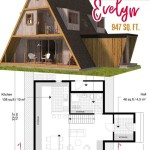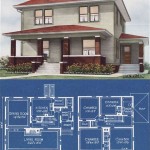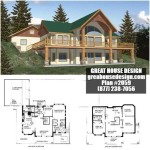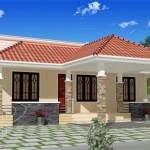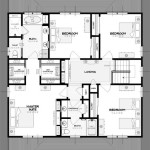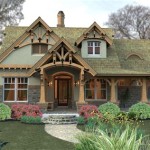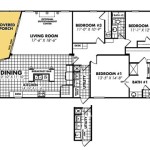Floor Plans for Lake Homes: Maximizing Waterfront Living
Lake homes offer a unique opportunity to connect with nature, enjoy recreational activities, and create a tranquil retreat. The floor plan of a lake home is paramount to achieving this lifestyle. It must address the specific considerations and advantages presented by a waterfront location. Designing these spaces requires careful planning to optimize views, manage moisture, and facilitate seamless transitions between indoor and outdoor living spaces.
Effective lake home floor plans prioritize the orientation of the house towards the water, ensuring that the primary living areas, such as the living room, dining room, and master bedroom, have unobstructed views. The layout should promote natural light penetration, enhancing the interior ambiance and reducing the need for artificial lighting during the day. Furthermore, the flow between rooms needs meticulous attention, allowing for comfortable circulation and effortless movement between spaces.
Beyond aesthetics, practical considerations are essential in lake home design. Durable, moisture-resistant materials are crucial for both interior and exterior finishes to withstand the challenges of a lakeside environment. Thoughtful planning for storage, especially for outdoor equipment like kayaks, fishing gear, and water toys, is also an integral part of a well-designed lake house floor plan. Accessibility is another key factor, particularly for multi-generational families or individuals with mobility limitations.
Optimizing Views and Natural Light
One of the primary goals of a lake home floor plan is to maximize views. Expansive windows and glass doors are commonly incorporated into the design to create a visual connection with the lake. Strategic placement of these features ensures that the most important rooms offer panoramic vistas. Moreover, the orientation of the house on the lot plays a crucial role in capturing desirable views and minimizing exposure to harsh sunlight. South-facing orientations often provide optimal sunlight throughout the day, while east-facing orientations can allow for beautiful sunrise views.
The use of open-concept layouts is often favored in lake homes to enhance the sense of spaciousness and allow natural light to penetrate deeper into the interior. This design philosophy seamlessly connects the kitchen, dining area, and living room, creating a unified space that encourages interaction and minimizes visual barriers. Large windows and sliding glass doors can be strategically placed within this open area to maximize natural light and provide unobstructed views of the lake.
Consideration should also be given to window treatments. While it's important to maximize natural light, control of glare and heat gain is equally important. Blinds, shades, or curtains can be used to adjust the amount of light entering the room and provide privacy when needed. Motorized options can offer effortless control, while sheer fabrics can filter light and maintain views. The design should integrate elements that provide shading, such as overhangs or awnings, to reduce direct sunlight exposure during peak hours.
Designing for Indoor-Outdoor Living
The seamless integration of indoor and outdoor spaces is a hallmark of lake home design. Decks, patios, and porches serve as extensions of the living area, blurring the line between inside and outside. These outdoor spaces provide opportunities for relaxation, entertaining, and enjoying the natural surroundings. The floor plan should facilitate easy access to these areas from the main living spaces, creating a smooth transition for both residents and guests.
Covered porches and screened-in areas are particularly valuable additions to a lake home. They provide protection from the elements, allowing enjoyment of the outdoors even during inclement weather or when insects are prevalent. A screened-in porch can serve as an outdoor dining room, a lounge area, or even an extra sleeping space. The design should consider the placement of these areas to maximize views and minimize exposure to wind and sun.
Outdoor kitchens and grilling areas are also popular features in lake homes. These spaces allow for outdoor cooking and dining, enhancing the enjoyment of the lakeside environment. The floor plan should incorporate a convenient connection between the indoor kitchen and the outdoor cooking area, facilitating the transport of food and supplies. Durable, weather-resistant materials should be used for outdoor furnishings and appliances to withstand the elements.
The use of multi-slide doors or folding glass walls can further enhance the connection between indoor and outdoor spaces. These doors allow for a large opening, creating a seamless transition between the interior and the exterior. When opened, they effectively eliminate the barrier between the two spaces, creating a sense of spaciousness and allowing for unobstructed views and airflow.
Material Selection and Moisture Management
The selection of appropriate materials is crucial for the longevity and durability of a lake home. Due to the proximity to water, moisture management is a key consideration. Materials used in construction should be resistant to rot, mold, and mildew. Exterior finishes should be able to withstand the elements, including wind, rain, and sun. Interior finishes should be durable and easy to clean, as they are likely to be exposed to dampness and dirt from outdoor activities.
For exterior siding, options such as fiber cement, vinyl, and engineered wood offer good resistance to moisture and insects. These materials are also relatively low-maintenance, requiring minimal upkeep over time. Natural wood siding can be used, but it requires regular sealing and maintenance to prevent moisture damage. Roofing materials should also be chosen for their durability and resistance to water damage. Asphalt shingles, metal roofing, and tile are all viable options, depending on the architectural style and budget.
Interior flooring materials should be chosen for their resistance to moisture and wear. Tile, stone, and luxury vinyl plank are all excellent choices for lake homes. These materials are durable, easy to clean, and resistant to water damage. Hardwood flooring can be used, but it should be properly sealed and maintained to prevent moisture damage. Area rugs can be used to add warmth and comfort, but they should be made of materials that are resistant to mold and mildew.
Ventilation is another important aspect of moisture management. Proper ventilation can help to remove excess moisture from the air, preventing the growth of mold and mildew. The floor plan should incorporate adequate ventilation in all areas, particularly in bathrooms, kitchens, and laundry rooms. Exhaust fans should be used to remove moist air from these spaces, and windows should be opened regularly to allow for natural airflow. A well-designed HVAC system can also help to control humidity levels throughout the house.
Planning for Storage and Functionality
Lake homes often require ample storage space for outdoor equipment, recreational gear, and seasonal items. The floor plan should incorporate dedicated storage areas, such as garages, sheds, and closets, to accommodate these items. Strategic placement of storage areas can help to keep the living spaces clutter-free and organized. Consider built-in storage solutions, such as shelving, cabinets, and drawers, to maximize space and efficiency.
Mudrooms are a valuable addition to a lake home, providing a transition space between the outdoors and the indoors. Mudrooms can be used to store shoes, coats, and other outdoor gear, preventing dirt and debris from being tracked into the main living areas. The floor plan should incorporate a convenient entrance to the mudroom from the outside, as well as a connection to the main living areas. Durable, easy-to-clean flooring should be used in the mudroom to withstand heavy foot traffic and moisture.
The floor plan should also consider the functionality of the kitchen and bathrooms. The kitchen should be designed with ample counter space and storage, as well as efficient appliances. A large island can provide additional workspace and seating. The bathrooms should be designed with durable, water-resistant materials and fixtures. Consider incorporating features such as walk-in showers, soaking tubs, and double vanities to enhance comfort and convenience.
Accessibility is another important consideration, particularly for multi-generational families or individuals with mobility limitations. The floor plan should incorporate features such as wide doorways, ramps, and grab bars to ensure that the house is accessible to everyone. Single-story layouts are often preferred for lake homes, as they eliminate the need for stairs. If stairs are necessary, they should be designed with adequate handrails and lighting.
In conclusion, designing a functional and aesthetically pleasing floor plan for a lake home requires a multifaceted approach, considering views, indoor-outdoor flow, material selection, storage, and accessibility. Thoughtful planning and attention to detail are essential to creating a lake home that enhances the waterfront living experience.

3 Bedroom Lake Cabin Floor Plan Max Fulbright Designs

Lake House Designs And More Blog Eplans Com

Open Concept Small Lake House Plans Houseplans Blog Com

Brick Lake House Plan With An Open Living Floor

Lake House Plans Floor Lakefront The Designers

Affordable And View Worthy Lake Homes Dfd House Plans Blog

Floor Plan 1 Lake House Plans Architectural Building Designs

Lake House Designs And More Blog Eplans Com

3 Bedroom Small Sloping Lot Lake Cabin By Max Fulbright House Plans Houses Rustic

Open Concept Small Lake House Plans Houseplans Blog Com

